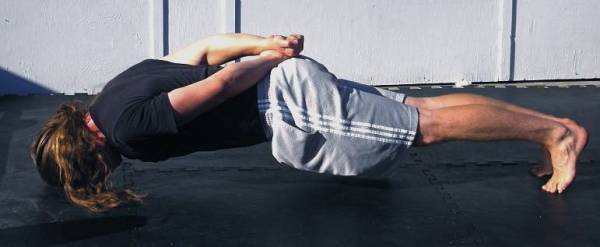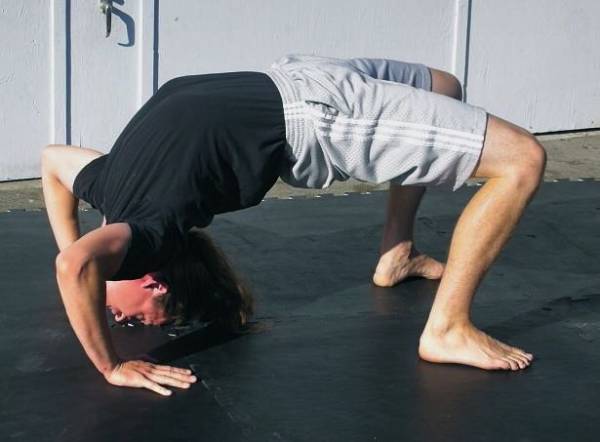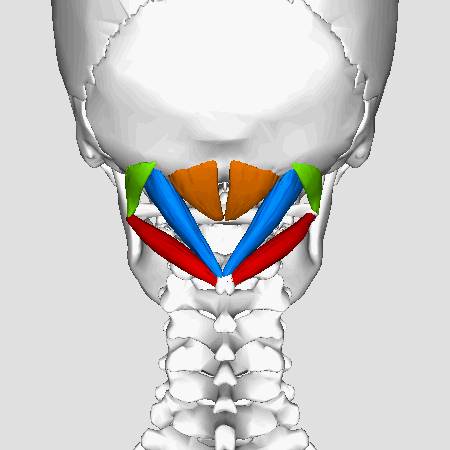You can probably remember the last time you worked your core or targeted your glutes with squats and lunges, but when was your last head and neck workout? It may not be an area we think about often (or ever), but there are over 100 muscles above your shoulders. These tiny muscles are responsible for everything from stabilizing your head to providing a pathway for nerve impulses to travel from your brain to the rest of your body.
Unfortunately, many gyms don’t offer a single piece of equipment for neck or head strengthening, and most workout programs neglect these muscles entirely. The good news? There are several simple exercises that require little or no equipment to challenge the overlooked muscles in your head.
Just a few of the muscles, glands, and nerves in the head and neck.
Getting Started
Start by performing 3 sets of 12-15 reps of each exercise twice a week. Between sets, gently massage your temples with the tips of your fingers to stimulate cerebrospinal fluid and blood flow to the brain.
Things you’ll need:
- Small pillow or towel
- Tennis ball, stress ball or Kong dog toy
- Hot pack
- Cold pack
- Partner (optional)
- Dumbbells (optional)
Neck Plank (flexion)
Begin in a standard plank position, lowering your forehead to the floor or mat (you may want a small pillow, towel, or yoga block for added support). As you transfer your bodyweight onto your head, attempt to lift your hands from the floor and cross them behind your back for more of a challenge.
This exercise will not only strengthen your neck, but will also challenge your core musculature. You may want to begin with your feet farther apart, gradually bringing them together as you get more comfortable with the exercise. You can also use your hands for support.

The neck plank challenges the neck and the core simultaneously.
Wrestler’s Bridge (extension)
Begin by laying on the floor with knees bent. Raise your hips as high as possible, using your hands for support. Transfer as much weight as you can to your head, slowly extending your neck. To progress, cross your arms over your chest and try extending your neck farther, bringing your nose closer to the floor or mat.

The wrestler’s bridge is a great way to improve neck mobility.
Side-to-Side Rotation
To do this exercise, simply turn your head to the side, with or without resistance. If you’re just beginning head and neck training, try this exercise without resistance to increase mobility before progressing. To make it more challenging, use your hands to provide resistance or have a partner press their palms against each side of your head as you rotate in that direction.
Right and Left Side Bend
Similar to the rotation, this exercise can be performed with or without resistance. It is also an effective stretch for tired or sore neck and shoulder muscles. Resistance can be applied by pressing your own hands into the side of your head as you flex your neck to the side, or a partner can provide resistance.
Shoulder Shrugs
Performing traditional shrugs will activate the trapezius muscles, which are often fatigued by habits like carrying bags over your shoulder or balancing a phone between your head and shoulder. Dysfunction in these muscles, especially in the upper trapezius, is a known contributor to migraine symptoms and general head and eye pain. Begin with simple shrugs without added weight and progress to weighted shrugs using dumbbells or a barbell for more resistance.
Jaw and Facial Movements
The suboccipitals play a major role in supporting the head and controlling movement. They are partially antagonized by the jaw muscles, in much the same way other muscle groups share a push-pull relationship. Dysfunction in the suboccipitals and jaw muscles can trigger head pain and contribute to tension in other areas of the head and neck.

The suboccipitals play a major role in supporting the head and controlling movement.
Assisted Jaw Opening
For this exercise, use two or three fingers to press your lower jaw down as you open your mouth wide. Hold this position for 10-15 seconds for an effective stretch, or perform sets and reps to strengthen the lower jaw.
Resisted Jaw Opening
Place your fingers under your chin and press up to provide resistance as you open your mouth. Perform three sets of 12-15 reps.
Lateral Jaw Movement
This movement can be performed in sets without resistance, by simply shifting your lower jaw to each side alternately. Your upper jaw should remain stationary.
Eyebrow Lift
Perform three sets of 12-15 reps by raising and lowering your eyebrows to strengthen the frontalis muscle. Pain can be caused by compressing the trigeminal nerve in this area. Inflammation and vasodilation in this area is a key factor in neurological disorders like migraine and trigeminal neuralgia.
Neck Rolling
Place a tennis ball or stress ball between the wall or floor and the back of your neck. By rolling gently over the ball, you’ll help muscles – specifically the suboccipitals – relax and recover. For an even more effective massage, you can use a small Kong dog toy (or similar) wrapped in a towel. Use this technique to massage your neck for 30 seconds at a time.
After Your Workouts
Post workout, use one hot pack to apply heat to the back of your neck and another to apply cold to your forehead. The heat will help to relieve tension and keep muscles loose, while the cold will reduce inflammation in muscles like the frontalis.
More Like This:
- 4 Drills to Strengthen and Injury Proof Your Neck
- 3 Simples Ways to Heal a Stiff, Sore, or Injured Neck
- 3 Quick and Simple Ways to Relieve Neck Pain and Stiffness
- New on Pulse Beat Fit Today
Photo 1 by “Gray781” by Henry Vandyke Carter – Henry Gray (1918) Anatomy of the Human Body via Wikimedia Commons.
Photos 2 and 3 courtesy of Logan Christopher.
Photo 4 by By Anatomography, via Wikimedia Commons.






